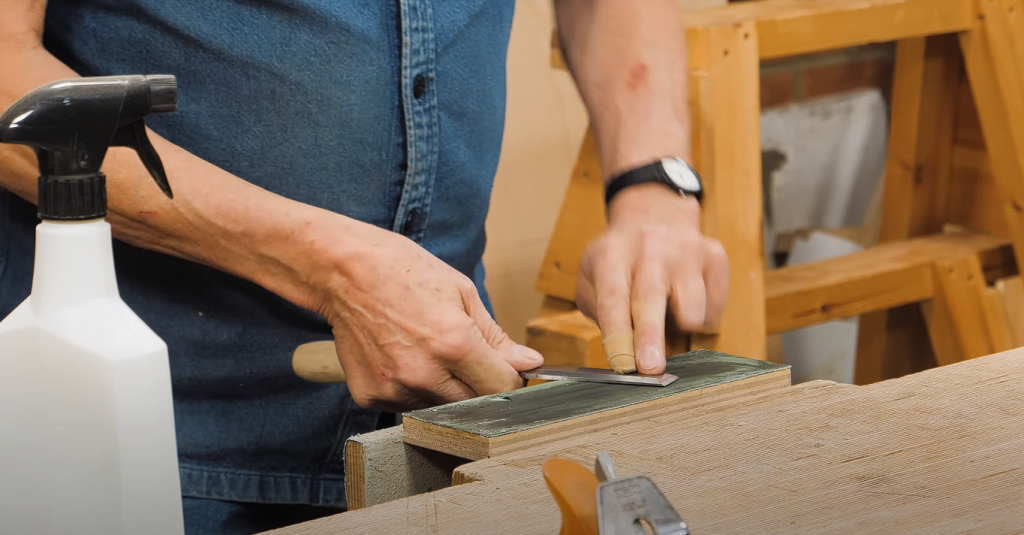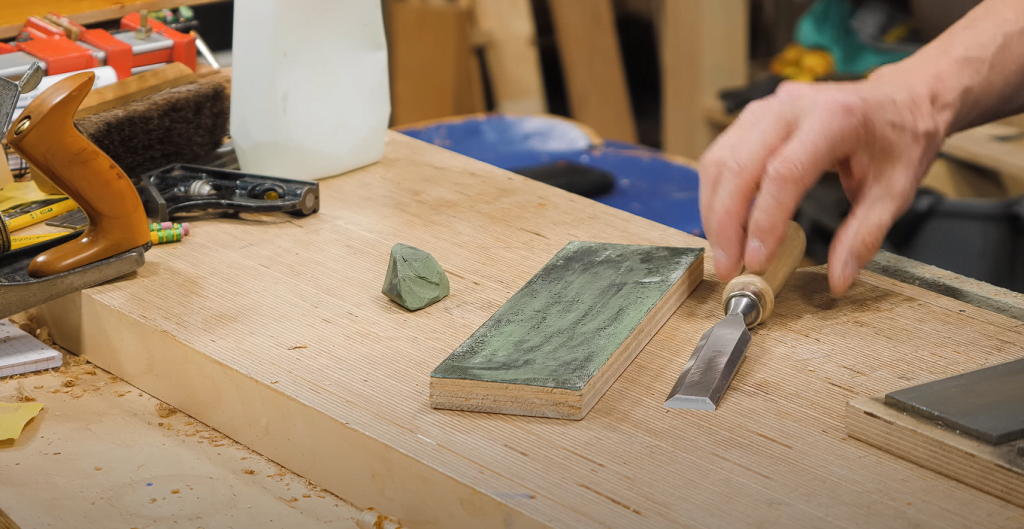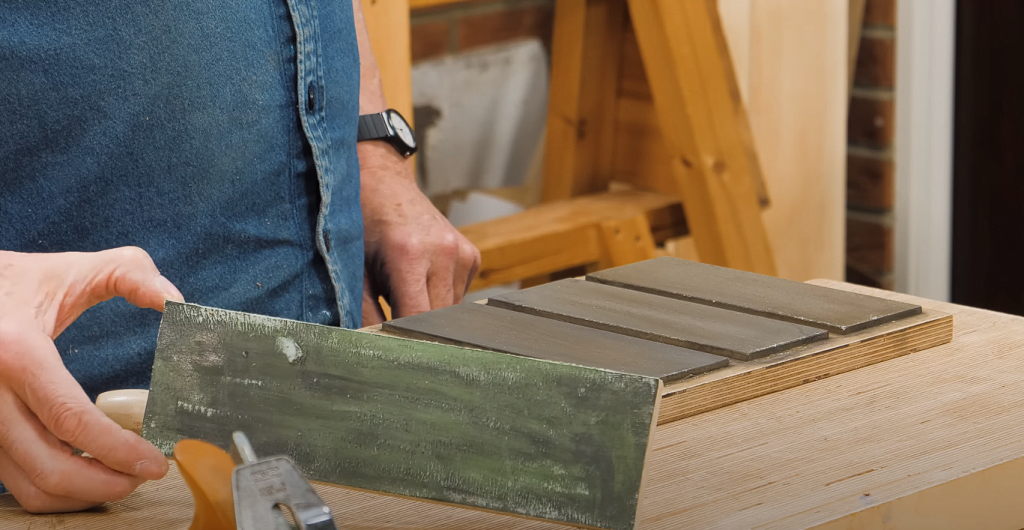Table of Contents
To sharpen woodturning tools, you can use a slow-speed grinder with a 6″ or 8″ wheel and keep a few accessories close to your lathe to encourage keeping an edge on your tools. You can also refer to online tutorials and videos on platforms like YouTube, where experienced woodworkers guide sharpening traditional turning tools and woodturning tools for beginners. It’s essential to keep the cutting edge of your turning tools sharp for optimal performance.
Key Takeaways
- Regularly sharpening woodturning tools is crucial for achieving precise and clean cuts and ensuring safety during turning projects.
- Use the appropriate sharpening techniques and methods, such as honing and grinding, to effectively maintain the edges of your wood-turning tools.
- Invest in essential sharpening equipment, including a grinder, honing guide, and various grit sharpening stones, to create and maintain sharp edges on your wood-turning tools.
- Setting up a dedicated sharpening station with proper lighting and ventilation will streamline the sharpening process and produce consistent results.
- Precision in sharpening is key; pay attention to angles, slopes, and the overall condition of the cutting edges to achieve optimal tool performance.
- Select sharpening stones and wheels based on the specific needs of your woodturning tools, considering factors such as grit size and material compatibility.
Sharpening Techniques and Methods
Bench-Top Grinders
Benchtop grinders are essential for sharpening woodturning tools. They offer stability for precise grinding and shaping of tool edges. Choosing the right grinder wheel grit size is crucial to achieve the desired sharpness. For instance, a coarser grit size is suitable for reshaping heavily damaged tools, while a finer grit size is ideal for honing an already sharp edge.
One helpful tip when using benchtop grinders is to ensure the tool rests flat on the platform to maintain consistent bevel angles during sharpening. It’s essential to avoid overheating the device by dipping it in water intermittently while grinding.
Grinding Wheels
Grinding wheels are vital in sharpening wood-turning tools as they come in various materials, such as aluminum oxide or cubic boron nitride (CBN). The choice of material affects hardness and durability, influencing their suitability for different types of steel. For example, CBN wheels are known for their long-lasting properties and are preferred for sharpening high-speed steel (HSS) turning tools due to their ability to withstand heat without losing shape.
When selecting a grinding wheel, matching its hardness with the type of steel being sharpened is crucial. This ensures efficient removal of material without causing unnecessary wear on the wheel or the tool being pointed.
Sharpening Jigs
Sharpening jigs provide consistency and repeatability when sharpening woodturning tools by maintaining proper bevel angles throughout each use. Using these jigs saves time while ensuring accurate results every time they’re employed. One can also customize jig settings based on personal preferences and requirements regarding bevel angles or edge shapes.
Essential Sharpening Equipment
Safety Goggles
When sharpening woodturning tools, it’s crucial to prioritize safety, including protecting your eyes from potential hazards. Safety goggles are a must-have for this task, as they shield your eyes from flying debris and sparks. Opt for safety goggles with impact-resistant lenses to ensure maximum protection. Remember, wearing these goggles is non-negotiable – they play a vital role in preventing eye injuries during sharpening.
It’s also helpful to share some personal insight here. I always wear my safety goggles before starting any sharpening work. This simple habit gives me peace of mind and allows me to focus on the task without worrying about potential eye injuries.
Permanent Markers
Permanent markers may seem unlikely for sharpening woodturning tools, but they are handy for marking bevel angles and reference points on the devices. Using different colors of permanent markers allows you to easily differentiate various bevel angles, making it more straightforward to sharpen hooks across other devices consistently.
I find that using permanent markers not only helps me stay organized but also saves time by ensuring that I’m consistently working with the correct bevel angle every time I sharpen a tool.
Tool Rests
Adjustable tool rests allow precise positioning and control while grinding or honing, contributing significantly to accurate and safe results.
Having correctly aligned tool rests has been instrumental in improving my sharpened edges’ overall quality – something I’ve noticed after incorporating this equipment into my routine.

Setting Up Your Sharpening Station
Proper Station Setup
A dedicated sharpening station is crucial for efficient and convenient tool maintenance. Organizing tools, jigs, and accessories systematically can save valuable time during sharpening. A well-lit, adequately ventilated station enhances visibility and comfort while working on your wood-turning devices.
A tidy workstation saves time and reduces frustration when searching for specific tools or accessories. Imagine having all your sharpening stones, honing guides, and other essentials neatly arranged within arm’s reach. This setup eliminates the hassle of rummaging through cluttered drawers or workbenches to find what you need.
I’ve found that good lighting is essential for accurate sharpening results. A bright workspace allows me to inspect my tools thoroughly as I work on them, ensuring that every part receives proper attention. Moreover, adequate ventilation helps dissipate any airborne particles generated during sharpening.
Slow-Speed Grinders
Investing in a slow-speed grinder offers numerous benefits. These grinders operate at lower RPMs, significantly reducing the risk of overheating tool steel during sharpening. As a result, they are ideal for maintaining the integrity of delicate cutting edges commonly found on woodturning gouges and chisels.
The slower speed provides better control over material removal from the tool’s edge while minimizing the chances of burning or damaging it due to excessive heat buildup. This level of precision is fundamental when dealing with high-speed steel or exotic alloys used in premium turning tools.
When choosing a slow-speed grinder for your workshop, look for models designed explicitly with woodturners in mind—these often come equipped with features tailored to our unique needs.

Precision in Sharpening
Protractors and Angles
Woodturning tools require precise bevel angles for optimal performance. Protractors and angle guides are essential for achieving consistent bevel grades during sharpening. They ensure uniformity across various woodturning tools, such as gouges and scrapers. Different protractors cater to individual preferences, allowing woodworkers to select the most suitable option based on their specific sharpening needs.
Using a protractor or angle guide eliminates guesswork when establishing the correct bevel angle for each tool. This results in a more efficient sharpening process, saving time and effort while maintaining precision. For instance, a bowl gouge may require a different bevel angle than a spindle gouge, and these tools can benefit from using dedicated protractors or guides tailored to their unique requirements.
Felt-Tipped Markers
When honing woodturning tools, felt-tipped markers serve as valuable aids in identifying high spots on the tool’s bevels. By marking these areas with contrasting colors, woodworkers can quickly pinpoint which sections require further attention during sharpening. For example, after grinding the tool’s edge geometry, a red marker can highlight any remaining high spots that need additional honing before achieving an ideal cutting edge.
Different colors of felt-tipped markers allow for clear differentiation between distinct stages of sharpening progress. This visual aid enhances precision by ensuring every step is meticulously executed without overlooking critical details.
Slip Stones
Slip stones, small handheld sharpening stones designed for accessing hard-to-reach areas on woodturning tools, are crucial in refining inside curves and intricate details on gouges and scrapers. Their versatility allows woodworkers to maintain sharp edges even in challenging areas where regular bench stones cannot reach effectively.

Choosing Sharpening Stones and Wheels
Sharpening Stones
Sharpening stones are crucial for maintaining sharp edges on wood-turning tools. They come in various types, such as water or oil stones, each offering different levels of abrasiveness. Regular use of sharpening stones is essential to prolong the lifespan and performance of wood-turning tools.
Water stones are known for their quick cutting action, while oil stones are durable and provide a smooth finish. Using a combination of both can ensure comprehensive sharpening for different woodturning tools. The consistent use of these sharpening stones helps to maintain the precision discussed in the previous section.
CBN Wheels
CBN (cubic boron nitride) wheels stand out due to their durability and long-lasting grinding capabilities. These wheels are particularly suitable for sharpening high-speed steel (HSS) and exotic alloy woodturning tools, providing consistent cutting performance over time.
CBN wheels require minimal maintenance compared to traditional grinding wheels, making them an efficient choice for woodturners seeking reliability in their sharpening equipment. Personal knowledge plays a significant role here; using CBN wheels has dramatically improved my efficiency when working with high-speed steel turning tools.
Wheel Dressing Tools
Wheel dressing tools play a vital role in maintaining the effectiveness of grinding wheels by reshaping and cleaning them regularly. By removing debris, glazing, and irregularities from the wheel surface, these tools ensure optimal sharpened results every time you work on your woodturning projects.
Regular wheel dressing not only improves the efficiency but also enhances the overall effectiveness of the sharpening process by creating a smoother surface on which to grind your woodworking tool edges.
Mastering Specific Tools
Sharpening Scrapers
Sharpening wood-turning scrapers is crucial for achieving smooth finishes on wood projects. Honing a burr along the edge is essential for effective wood removal. Different scraper profiles, such as round nose and square, require specific sharpening techniques to perform optimally. Properly sharpened scrapers ensure clean cuts and reduce sanding time.
Consider using diamond plates or waterstones with various grits. Diamond plates are durable and provide consistent results, while Waterstones offer versatility in maintaining different scraper profiles.
Diamond Parting Tools
Diamond parting tools featuring diamond-shaped blades excel at cutting straight lines in wood-turning projects. It’s crucial to keep the point sharp and maintain the correct bevel angle during sharpening to maintain optimal performance. Properly sharpened diamond parting tools result in clean, accurate cuts without tear-out or chipping.
For beginners learning to use these tools effectively, seeking guidance from experienced turners can be immensely helpful. I’ve found that watching video tutorials on proper tool usage has significantly improved my technique with diamond parting tools.
Using Skew Chisels
Mastering the skew chisel technique involves maintaining consistent bevel contact with the wood surface for successful turning operations. Different skew chisel grinds offer varying cutting characteristics suitable for specific applications like spindle work or bowl hanging.
When selecting a grind type for your skew chisel, consider traditional grinds, such as oval or fingernail grinds, based on your turning needs. Each task offers unique benefits; therefore, understanding their differences will help you achieve better results in your woodturning projects.

Maintaining and Evaluating Sharpness
Honing Edges
After grinding woodturning tools, honing edges is essential to remove burrs and refine sharpness. This process produces a polished edge that enhances cutting performance by reducing friction. Regular honing is crucial for maintaining optimal tool sharpness.
For instance, I use a leather strop with an honing compound after sharpening a gouge to refine the edge further. The smooth, polished surface achieved through honing allows the tool to glide through the wood effortlessly while turning.
Honing also helps achieve a razor-sharp edge on parting tools, ensuring clean cuts when separating turned pieces from the lathe.
Sharpness Levels
Different woodturning tools require varying levels of sharpness to perform optimally. Sharper tools deliver cleaner cuts, reduced tear-out, and improved control during turning. Understanding each tool’s desired sharpness level ensures consistent and satisfactory results.
For example, spindle gouges benefit from being sharper than bowl gouges due to their intended use for finer detailing work on spindles or other small projects.
Maintaining different sharpness levels for my various wood-turning tools allows me to adapt quickly to varying types of wood and turning techniques while consistently achieving precise and clean cuts.
Tool Maintenance
Regular maintenance of woodturning tools is vital for extending their lifespan and ensuring optimal performance. Proper cleaning, oiling, and storage prevent rust and corrosion on tool surfaces. Inspecting agencies regularly for any damage or wear enables timely repairs or replacements when necessary.
I always make it a point to wipe down my chisels after every use before storing them in an oil-soaked rag in an airtight container. This simple practice has significantly minimized instances of rust developing on my tools over time.
Woodturning Tools
Lathe Chisels
Woodturning tools encompass a variety of chisels, each serving a specific purpose in shaping wood on a lathe. Properly sharpened lathe chisels and carbide tools are crucial for achieving clean and precise cuts. Different lathe chisels, such as spindle and bowl gouges, require specific sharpening techniques to optimize their performance.
Sharpening my lathe chisels and carbide tools has significantly improved the quality of my woodturning projects. I’ve learned that maintaining sharp edges on these tools enhances precision and makes the turning process smoother and more enjoyable.
Spindle Gouges
Versatile spindle gouges are crucial in shaping spindles and adding intricate details to woodturning projects. Achieving a fine point through proper sharpening allows for delicate work with detailed designs. The shape and size of the flute in a spindle gouge greatly influence its cutting performance, making it essential to pay attention to these details when sharpening.
I find that keeping my spindle gouges sharp enables me to easily create finer details while minimizing mistakes or accidents due to dull blades.
Skew Chisels
Used for smoothing and finishing cuts in woodturning, skew chisels require precise sharpening to reduce tear-out and produce smooth surfaces. Mastering the technique of using skew chisels demands practice and precision alongside well-maintained sharpness.
Sharpened skew chisels have made a noticeable difference in the quality of my turned pieces by allowing me to achieve cleaner finishes with minimal effort.
Final Remarks
Precision and consistency are paramount in mastering the art of sharpening wood-turning tools. Understanding the intricacies of each device, employing the proper techniques, and maintaining sharpness is essential for achieving optimal results. The choice of sharpening equipment and the setup of your sharpening station play a crucial role in this process. By honing these skills, woodturners can elevate the quality of their work and ensure safety in their craft.
As you delve into the world of woodturning, remember that sharpening is not just a task but a fundamental skill that directly impacts the outcome of your projects. Practice, patience, and attention to detail will undoubtedly contribute to your growth as a woodturner. Embrace the journey of mastering sharpening techniques, and let it become a seamless part of your creative process.
Frequently Asked Questions
How important is it to maintain sharpness in woodturning tools?
Maintaining sharpness in woodturning tools is crucial for achieving clean cuts, reducing tear-out, and ensuring safety. Dull tools can lead to rough finishes and increased risk of accidents. Regular sharpening preserves the tool’s edge geometry, enhancing performance and prolonging its lifespan.
What is the essential equipment needed for sharpening woodturning tools?
Essential equipment for sharpening woodturning tools includes a bench grinder with appropriate wheels, a honing guide, various grits of sharpening stones or diamond plates, a jig for consistent angles, and a reliable means of flattening the rocks. Quality equipment ensures precise and effective sharpening results.
How do I choose the suitable sharpening stones and wheels for my woodturning tools?
Select sharpening stones based on their grit size suitable for initial grinding (lower grit) and honing (higher grit). For bench grinders, opt for aluminum oxide or silicon carbide wheels with appropriate coarseness. Consider wheel diameter and speed rating compatibility with your grinder model.
Can you explain the importance of precision in sharpening wood-turning tools?
Precision in sharpening is vital as it directly influences cutting performance. Consistent bevel angles across different turning chisels ensure optimal cutting efficiency while minimizing material wastage. Precise honing results in cleaner finishes on turned projects and reduces the need for excessive sanding or finishing processes.
What are some techniques recommended for mastering specific woodturning tool sharpening methods?
Master specific tool-sharpening techniques separately, focusing on chisel types such as gouges, scrapers, and part tools. Before choosing a tool style, learn how to achieve ideal bevel profiles and edge geometries.
